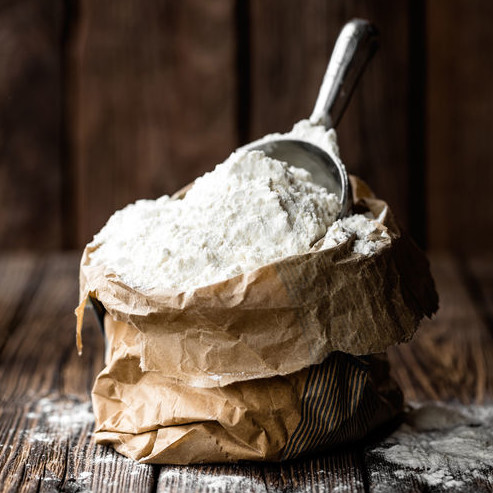
Flour Spec Sheet
Also known as technical product data sheet
What is a Flour Spec Sheet?
A flour spec sheet is a document that provides information on flour’s technical specifications. It should express and define the flour requirements that must be met by the mill in order to comply with the bakery’s quality specifications and expectations.
In most cases a spec sheet is a confidential document that a mill (supplier) shares with its customer (the bakery). This document is usually sent to the bakery during:
- Supply negotiation
- Wheat crop changeover
- Before the first purchase order for flour is placed
How does it work?
Spec sheets in most cases contain quantitative data. The spec sheet should provide maximum, minimum, target values and/or range of values for each technical parameter, and the respective methods of analysis used for the assessment of each parameter.1
Setting flour specifications is the responsibility of both the mill and the bakery since both are directly affected by flour’s quality conditions. Wheat flour is the most critical ingredient for breadmaking and has the highest impact on processing and variability. This is why the information contained in the flour spec sheet must be precise and clear.
Application
A flour spec sheet should provide the following information:2,3
- Product definition or description of flour (e.g. enriched hard red spring HRS)
- Comprehensive section. Information should include:
- Wheat type(s) or classes used in blend
- Milling conditions (e.g. patent, straight-grade, clear, stone-ground, roller milled)
- Additives or treatments (e.g. enriching, malting, oxidizing, enzyme, supplementation, maturing), with specified levels
- Any other information that distinguishes the flour from others
- Regulatory information (e.g. compliance with 21 CFR Part 137)
- Food safety information. This section should include any information relevant to the safety of the flour for the consumer:
- Statements concerning pesticide contamination
- Presence of toxins
- Allergenicity of wheat gluten
- Kosher designation (if applicable). Not all flours are considered Kosher.
- Organic designation (if applicable). A certifying agency and a certification date or code should be provided in this section.
- Sampling plan for analysis. This section should describe:
- The procedure for obtaining flour samples for analysis
- Frequency of analysis (e.g., per shipment, per mill run)
- How many samples are required, and information as to how the samples
are physically collected.
- Acceptance criteria. This section should include:
- Analytical specifications for quality parameters (e.g. moisture, protein, ash, non-starch polysaccharides, damaged starch)
- Microbiological specifications (e.g. coliforms, yeast, mold, E. coli, Salmonella)
- Nutritional composition specifications
- Maximum, minimum, target values and/or range of values for each technical parameter
- Testing procedures required for the supplier analyses
- Specification of the approved methods for the analyses/test
- Procedure when a test is out of specification. This section should describe what action should be taken when an analysis is out of specification. This may involve:
- Informing the supplier
- Making adjustments in a formula
- In severe cases, rejection of flour
- Crop-year changeover procedures. Crop-year changeover can have significant effects on flour. Some companies prefer to evaluate blends of old-crop and new-crop flour through a changeover; others prefer to change abruptly.
- Recommendations regarding storage conditions. Temperature, relative humidity, and optimum storage time should be specified in this section.
- Shipping, packaging and shelf-life information. Accurate and relevant details on how the flour is transported to the bakery should be provided here (e.g. railcar, flour truck or individual bags. The following info may also be included:
- Packaging material of bags
- Size and weights of containers
- Shelf-life of flour according to storage recommendations
- Pallet configuration for flour shipping in bags (i.e. bags per pallet, bags per layer, gross weight per bag, pallet dimensions)
- Labeling information. This information helps state and declare the flour as ingredient in the finished baked goods.
- Confidential information. Additional information for a confidential section of the spec sheet may include test results from:
- Farinograph
- Mixograph
- Extensograph
- Risograph
- Alveograph
- Falling number
- Viscoamylograph
- Rapid visco analyzer
- Mixolab
- Particle size (sieving)
- SRC (solvent retention capacity)
Such results may become very important in situations where a flour shipment is out of specification for protein, ash and/or moisture content.
Relationship between flour spec sheet and COA
A flour’s COA needs to be reconciled with its spec sheet for quality assurance all the time. If a bakery uses the wrong wheat flour, the dough may not process correctly. Flour with the wrong specifications in the dough may present issues with water absorption, handling properties and yeast activity during fermentation and proofing.
There is a high chance for the flour to render bread with undesired qualities and shelf-life attributes.
References
- Nielsen, S.S. “Introduction to Food Analysis.” Food Analysis, 5th edition, Springer International Publishing, 2017, pp. 3–15.
- Finnie, S., and Atwell, W.A. “Specifying “Quality” Flour.” Wheat Flour, 2nd edition, AACC International Handbook Series, AACC International, Inc., 2016, pp. 79–89.
- Uthayakumaran, S., and Wrigley, C. “Wheat: Grain-Quality Characteristics and Management of Quality Requirements.” Cereal Grains: Assessing and Managing Quality, 2nd edition, Woodhead Publishing, Elsevier Ltd, 2017, pp. 91–125.

